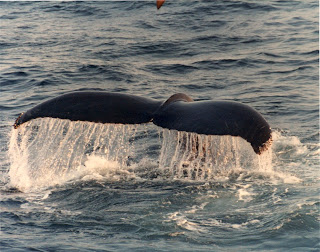Whoever thought a whale would breech and land on a sailboat. I have had a number of close encounters with whales. Never anything like this.
Encountering turbulence on an airplane, this must have been really unexpected.
How does an event where dinghys capsize due to wind make national news?
The RNLI is one of the best and most efficient rescue services anywhere.
The real story of the hour is how DUE PROCESS was not accounted for in the story of Shirley Sherrod losing her job. This is one of the most essential elements of our system of government, innocent until proven guilty.
Date: 19/07/2010
Author: Tamsin Thomas, Divisional Media Relations Manager
Volunteer lifeboat crews from Sennen Cove and St Mary’s, Isles of Scilly, were launched in the early hours of yesterday morning (Sunday 18 July) following reports that a yachtswoman had fallen overboard 50 miles north west of Land’s End. Just before the lifeboats arrive on scene, the extremely fortunate sailor was found by another yacht and airlifted to hospital.
The racing yacht Buccaneer was returning from Cork Week Regatta in Ireland when the woman went overboard in fresh south westerly winds and a moderate sea. Another yacht, Jaguar Logic, relayed a message to Falmouth coastguards and the two lifeboats were launched, along with the rescue helicopter from RAF Chivenor.
The RNLI crews on Sennen Cove Tamar class all weather lifeboat and the St Mary’s Severn class all weather lifeboat headed for the scene at top speed. But just 12 or so miles from the scene, news came that the woman, who had been in the water for two hours, had been found alive and was being winched onboard the helicopter. She was then flown to the Royal Cornwall Hospital at Treliske in Truro, Cornwall.
The Sennen Cove lifeboat crew onboard City of London III, arrived home at 5am in the morning after an 80 mile round trip, while the crew onboard the St Mary’s relief lifeboat Beth Sells, were back in the islands at around the same time.
Terry George, RNLI Coxswain at Sennen Cove, says the woman was extremely fortunate:
‘The yachtswoman was very lucky to survive several hours in the water and in the pitch dark. Fortunately there were other yachts in the area that responded immediately and search and rescue assets were launched very quickly too. It happened a long way out but this is why the RNLI position fast response all weather lifeboats like our Tamar, at key places around the coast.’
BELMAR, N.J. – July 19, 2010 — A sudden storm capsized boats being used in a youth sailing class on the shallow Shark River on Monday, shaking up the novice sailors inside but seriously injuring no one.
The 36 students, ranging in age from 7 to 16, were all wearing life jackets. The only injury was to a volunteer instructor who suffered minor scrapes on his knee and foot.
Belmar Mayor Ken Pringle said the wind knocked over 25 to 30 of the small sailboats being used in a learn-to-sail program run by the Belmar Recreation Department.
“It was a little scary while it was going on, but we determined pretty quickly everyone was accounted for and OK,” he said.
Police, fire and rescue groups from around the area responded and took the children back to shore. A dozen lifeguards left a beach about a mile away to help with the water rescues.
The Shark River is a generally shallow waterway that collects tidal sediment washed in from the ocean. Some scientists say it’s more like a tidal basin or a bay, particularly the part where the students were boating.
The students, who were enrolled in a two-week class, were sailing in three groups: one closest to the shore in very shallow water, and two others farther out.
(Copyright ©2010 by The Associated Press. All Rights Reserved.)
whale tale This one is almost hard to believe, and in fact it sort of is…
We had been taking some pictures and had just decided to head back when a Southern Right whale, between 11 – 14 m long, breached about 100 meters away from us. It then suddenly breached about 10 meters from us and then – right on us! We were sailing so had no engine and we could not even take any action. Scary!” Read on and see the resultant picture. Thanks to the Portfolio Travel Blog. Jump in the discusion. 07/20/10 |
 Click for more photos
Click for more photos














